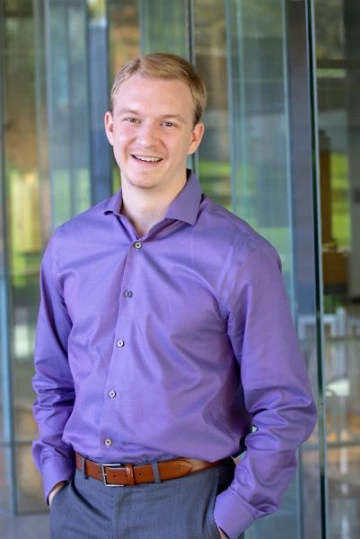Another Wavelength: Christer Everly

This month in Another Wavelength, we chat with B.S. Student Christer Everly. Christer is working on a defense project under Roger Tree's supervision with RMIData LLC.
Where are you from?
I have lived my entire life thus far in Tucson. Born and bred a desert rat!
What brought you to study optics?
My journey to optics was almost coincidental. I started my Freshman Year in the Fine Arts program as a Dance Major but quickly realized I needed more science in my life. I had previously enjoyed both physics and math as well as designing, so I decided to take a look into optical engineering.
Flash forward a few years and I am loving what I am learning and where I have been working. My passion lies within optical physics, lasers, and photonics. The little kid in me still gets excited to learn how the universe works and loves using super powerful lasers to do that!

Who is your hero in science?
It may sound cliché, but my biggest science hero is probably Albert Einstein. The more I learn in class, the more I become simply astounded at the predictions and the contributions he made toward our understanding of modern physics. Furthermore, he was able to make these sophisticated predictions and theories without any of the modern tools or laboratories we have today! Also, as someone who loves lasers, I have to give him a special thank you for predicting stimulated emission.
Describe your research in 20 words or fewer.
I created an assembly and alignment procedure for a 40+ optic IR laser.
Describe your research in 200 words or fewer.
I developed a procedure to assemble a short-wave infrared laser illuminator for a naval directed energy weapon system while working at Lasertel Inc. last summer. The laser I created the assembly procedure for was an illuminator for the directed energy weapon meaning it was part of the targeting system, so its focus was less on the transfer of energy and more on the shape and precision of the beam.
The IR laser combined beams from eight different semiconductor laser diode arrays into a single beam via use of dichroic mirrors and a polarization beam combiner. Creating the assembly procedure involved making diagrams and simulations in Zemax as well as testing individual steps in the lab.
Name three neat facts about you.
- I love competing in local CrossFit Competitions! I am not exactly a winning athlete, but I really enjoy competing whenever I can.
- I really like hiking and trail running throughout the mountains surrounding Tucson.
- Something a lot of my friends actually don’t know about me is that I’ve been playing piano for the last 12 years and actually used to work for a Steinway store for a short time.
